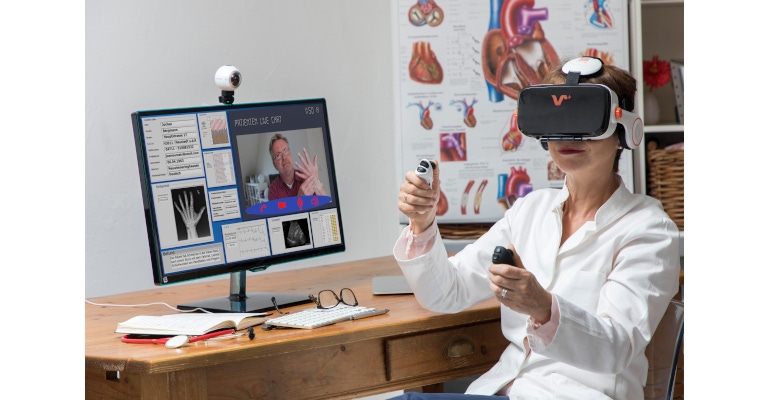Telemedicine Offers Opportunities Despite the Risks
Several healthcare specialties are ready for further telemedicine development.

Telemedicine refers to several methods that connect patients to their healthcare professionals. Some of these methods include live videos, texting, and phone calls. Perhaps the most appealing aspects of using telemedicine revolve around answering patients’ questions and following up after an in-person visit. However, telemedicine can also be useful in diagnosing patients and mitigating difficult situations (e.g., the COVID pandemic).
This article will cover some of the benefits offered by telemedicine, especially in diagnosing patients and allowing them to access specialized care. It will also discuss a few specialties that could further benefit from telemedicine services and present development opportunities for technology innovators.
Benefits for Patients and Physicians
Convenience. Telemedicine offers a lot of convenience for patients and doctors alike. By using this technology, patients can have instant access to healthcare. They can ask questions, follow up with their physicians, and express their worries, all without leaving their houses. Just a few clicks save the patients from all the traffic jams or the burden of traveling hundreds of miles to the doctor’s office. Telemedicine is by far one of the best ways to save time while receiving high-quality medical care. Doctors who use telemedicine also report having lighter working days and a higher level of satisfaction when helping patients who live in remote areas.
Flexibility. Telemedicine allows for a virtual consultation from home or the office. Setting an appointment with telemedicine has become easier than ever. Additionally, patients can adjust their appointment based on their schedules. Ideally, patients would speak with their doctors to figure out a timeline that works for both parties.
Dealing with Specialized Conditions
Telemedicine can be helpful for patients, especially when dealing with complicated conditions that require specialized care. Given a shortage of specialized care, telemedicine has become incredibly useful for all healthcare providers who want to expand their services. This is especially true in some areas, where large hospitals are scarce. Moreover, some patients live in remote areas with no access to medical care.
Popular Specialties for Telemedicine Solutions
Teleradiology. This field of medicine is one of the early adopters of telemedicine, dating back to the 1960s. The primary purpose was to help with diagnosing patients using x-rays. Today, some hospitals in the United States don’t even have a radiologist. Other hospitals may have limited access to such specialists. Without a radiologist to interpret these images, a diagnosis can be challenging to obtain, so telemedicine helps fill this gap. Despite being an early adopter though, radiology requires more investment in telemedicine.
Telepsychiatry. There is a nationwide shortage of psychiatrists. This creates a huge problem, especially with the alarming rise in mental health disorders. Fortunately, telepsychiatry offers the solution. Ever since the start of the pandemic, the vast majority of psychiatrists began offering telemedicine services. This allowed patients to benefit from quality care and aided doctors to expand their services.
Teleobstetrics. Prenatal care can be provided virtually. Patients can also receive teleobstretrics care with the help of an intermediary. For instance, a doctor can receive a recording of a baby’s heart rate from a distant location (with the help of an ultrasound technician).
Teledermatology. Dermatologists mainly offer their services in large metropolitan areas, which means that people who live in smaller cities or rural areas face difficulties benefiting from such services. Telemedicine allows patients to send pictures of their skin rash or mole to allow for remote diagnosis or referral for biopsies or other tests.
Teleoncology. Patients with cancer may have difficulties going to the oncologist’s office. Visits can revolve around treatment surveillance, tips, or therapeutic decisions. Today, oncologists can reach their patients no matter where they are with a few clicks.
Telerehabilitation. Physical therapy can be offered through telemedicine to help patients recover from injuries.
This list of specialties is by no means comprehensive. Every specialist can offer their services on their own terms while benefiting their prospective patients.
Risks of Telemedicine
Despite the benefits of telemedicine, there are a few risks. For instance, not being able to examine the patient can lead to inaccurate diagnoses. Consequently, the treatment for the condition will be ineffective at best and harmful at worst.
These risks are factual, yet physicians are conscious of the conditions that can be diagnosed and treated virtually and the ones that cannot. Despite these risks, telemedicine remains one of the best integrations of the digital world in medicine.
Challenges
Some may wonder how certain specialties could benefit from telemedicine, especially when some procedures can only occur in person. Telemedicine certainly cannot replace in-person visits; it could, however, provide support during non-procedural visits.
Moreover, getting the help of a specialist via telemedicine to guide a local physician/dentist can be extremely beneficial. Using the digital world to aid with diagnosing patients can aid those with limited access to specialized care.
Telemedicine and HIPAA
Telemedicine services implement several safeguards to prevent patient information disclosure. Compliance with HIPAA is undisputable. To ensure this process, platforms keep uses and disclosures to a minimum. Procedures to limit the number of people who can access the patient’s personal information are implemented.
Conclusion
Telemedicine reflects the advances made in the digital world in the field of medicine. Patients who received telemedicine services report a high level of satisfaction, which predicts a bright future for this field.
About the Author(s)
You May Also Like



